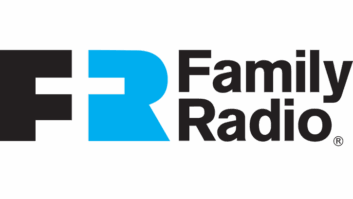In this commentary, the chief scientist of iBiquity Digital Corp. assesses Digital PowerRadio’s HD Radio Receiver performance improvement proposal.
I’ve read with great interest Radio World’s coverage of the Digital PowerRadio (DPR) proposals to improve HD Radio broadcasting. I have known Brana Vojcic since the late 1990s, when he and Ray Pickholtz from The George Washington University consulted for us. As iBiquity’s chief scientist and the primary inventor of HD Radio technology, I focus my efforts on maximizing system performance, and welcome DPR’s efforts to help.
Unfortunately, in this case, iBiquity’s analyses and simulation results show that DPR’s proposals won’t achieve the performance gains claimed by DPR.
Based on their own information in recent presentations and a paper, DPR has made faulty assumptions about current receiver implementation. They modeled a “conventional” receiver which they mistakenly presumed to be representative of fielded receivers. We have simulated the same “backward-compatible” DPR scenarios for existing HD Radio receivers, and found that DPR has substantially underestimated their performance.
When we compare simulation results, we find that existing HD Radio receiver performance is similar to or better than that of DPR receivers. For instance, in UF Rayleigh fading with –14 dBc digital injection and a –20 dBc first-adjacent FM interferer, DPR claims more than 8 dB improvement; however, our simulation results indicate that existing HD Radio receivers are actually 2 dB better than DPR receivers in that environment. In other environments, performance is similar, contrary to DPR claims of 6 or 7 dB improvement for their receiver.
The accompanying charts provide a good summary of the relative performance of the two approaches.

DPR is apparently unaware that iBiquity had studied most of their proposed techniques some years ago, and even implemented some of them, although the implementation details differ somewhat. For instance, iBiquity hired Carl-Eric Sundberg, the recognized authority on the topic, who helped us study and simulate iterative (list) decoding. We also simulated soft RS decoding methods. However, these techniques were deemed impractical after balancing the cost of increased processing and memory with their modest performance gains.
Finally, iBiquity has found that many of DPR’s assumptions and conclusions are not accurate. We have specific data and/or simulation results to validate all of our analyses. For instance:
- The R-matrix decoding in existing HD Radio receivers is more robust than that proposed by DPR, since iBiquity has been able to exploit certain signal characteristics, of which DPR is apparently unaware.

- DPR’s “optimized Laplacian FEC decoding metric” is inaccurate. FM interference to OFDM subcarriers is better characterized by a Gaussian PDF, not Laplacian. Furthermore, existing HD Radio receivers employ additional techniques to accommodate impulsive-like noise.
- DPR’s target FER of 10 exaggerates their claimed performance gains. iBiquity’s target FER of 10 is consistent with the International Telecommunications Union standard. A target FER of 10 is more appropriate for radio coverage comparisons, and audio codecs are very effective at concealing artifacts at that rate.
- Performance of DPR’s proposed future all-digital mode was inappropriately compared to the existing hybrid MP1, and not compared to iBiquity’s currently fielded, more-robust, all-digital modes MP5 and MP6.

Therefore, based on these observations and our analyses, we conclude that the proposed DPR modifications will not provide a useful benefit beyond what iBiquity has already provided in the HD Radio system, and won’t achieve the performance gains claimed by DPR. We remain ready to work with broadcasters and the entire industry to maximize performance of the HD Radio system. Through improved coding techniques, enhanced algorithms, antenna improvements, and refined receiver implementations, we have worked to enhance both HD Radio transmissions and receiver performance. And since nobody has more at stake in the future of HD Radio technology, we will continue that effort. It’s what we do every day.
Comment on this or any story. Post below or email [email protected] with “Letter to the Editor” in the subject field.







